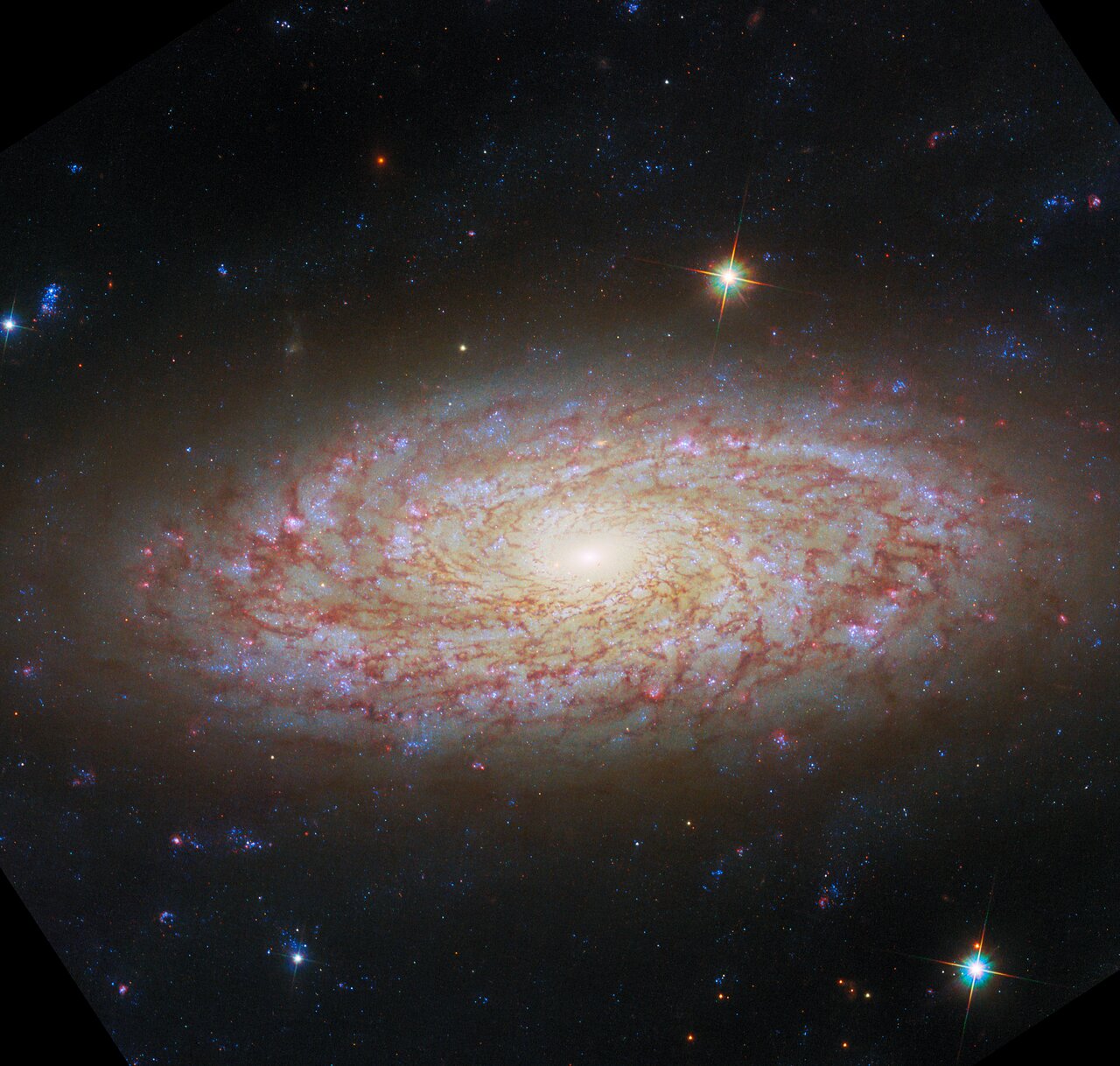About the Object
| Name: | NGC 2090 | |
|---|---|---|
| Distance: |
40 million light years | |
| Constellation: | Columba | |
| Category: | Galaxies | |
Coordinates
| Position (RA): | 5 47 1.68 |
|---|---|
| Position (Dec): | -34° 14' 57.69" |
| Field of view: | 2.24 x 2.14 arcminutes |
| Orientation: | North is 80.5° left of vertical |
Colours & filters
| Band | Wavelength | Telescope |
|---|---|---|
|
Ultraviolet
UV | 275 nm | Hubble Space Telescope WFC3 |
|
Optical
U | 336 nm | Hubble Space Telescope WFC3 |
|
Optical
B | 438 nm | Hubble Space Telescope WFC3 |
|
Optical
V | 555 nm | Hubble Space Telescope WFC3 |
|
Optical
I | 814 nm | Hubble Space Telescope WFC3 |
|
Optical
H-alpha + NII | 657 nm | Hubble Space Telescope WFC3 |
Viewing a flaky disc
Featured in this new NASA/ESA Hubble Space Telescope Picture of the Week is the spiral galaxy NGC 2090, located in the constellation Columba.
This galaxy is notable as a part of the group of galaxies studied in Hubble’s Extragalactic Distance Scale Key Project, which aimed to determine a new state-of-the-art value for the Hubble constant, one of the then-new telescope’s primary science goals. The contribution of NGC 2090 was in calibrating the Tully-Fisher (TF) distance method, by observing Cepheid variable stars in the galaxy. The Cepheid-based measurement from that study in 1998 put NGC 2090 as 37 million light-years away; the newest measurement from 2020, using the TF method, has NGC 2090 slightly farther away, at 40 million light-years.
Before and since that project, NGC 2090 has been well studied as a very prominent nearby example of star formation. It has been described as a flocculent spiral, meaning a spiral galaxy with a patchy, dusty disc and arms that are flaky or not visible at all. This Hubble image shows well why NGC 2090 earned that description, but its spiral arms do appear among the dust as winding lanes of light.
NGC 2090 is a galaxy still full of activity, with clusters of star formation at various stages of evolution spread across the disc. Examining star formation and the movement of matter in galaxies was the motivation for these Hubble observations, taken in October of this year.
This image has been adjusted slightly to compare with the image from Webb. See the original here.
[Image Description: A spiral galaxy with a wide, oval-shaped disc. It has a shining spot at the centre which is surrounded by a whirl of dark threads and patches of dust, all atop a luminous disc. Some brighter lanes curving through the disc indicate the galaxy’s spiral arms. The glow of the disc fades smoothly into a dark background where faint, extended patches of dust can be seen, as well as some foreground stars.]
Credit:ESA/Hubble & NASA, D. Thilker
About the Image
| Id: | potm2411b | |
|---|---|---|
| Type: | Observation | |
| Release date: | 27 November 2024, 10:00 | |
| Size: | 4380 x 4168 px | |




